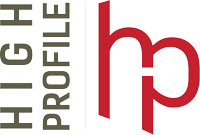by Erik Lustgarten
It seems that every five years a new model for a “lab of the future” promises to revolutionize research. Whether the aspirations are toward improved collaboration for more innovative product ideas or greater flexibility over the life of a research facility, the new ideas typically stem from overall workplace design trends.
With space in Kendall and Longwood at a premium, making the right decisions about planning for the future can have a big impact as science changes and companies grow. In many research disciplines, the type of space that researchers really need isn’t even traditional lab space. Based on industry trends and our recent design work, these three influences stand out as the key drivers shaping the next-generation research facility.
No. 1: The Only Constant Is Change, and it’s Happening Faster
Innovative science is no longer languishing in the dark corners of fireproof safes and minus-80-degree freezers; it is available and searchable on the cloud. Scientists are rapidly adopting mobile computing platforms that make documentation a seamless, multimedia process that can be completed anywhere. To protect these assets, secure, reliable data centers and network connectivity are essential.
In the early stages of development, automated genomic sequencing processed 10,000 compounds per day. Today, through flow chip technology, we can process over a billion compounds per day using equipment with a smaller physical footprint. As lab processes are automated for other disciplines, these systems will require adaptable space that can accommodate equipment noise and environmental pollutants. Increased automation of sample prep work will yield more reproducible results and lift the burden of tedious, repetitive tasks traditionally assigned to grad-students and post-docs to allow them to focus on science.
No. 2: Connectivity is King
Work has changed. With tools like desktop video conferencing and collaboration software, multidisciplinary research teams are no longer limited to a single location (or even a single organization). Rather than working in disconnected siloes, multidisciplinary teams collaborate from the outset.
Ten, and even five, years ago, a scientific researcher would automatically be assigned a six-ft. work bench and a four-ft. desk. This paradigm has given way to a model where shared common space is the priority. Based on our workplace research, Gensler developed three strategies for physical and virtual collaborative environments:
- Design for serendipity at key points of intersection across multiple teams and business units.
- Display works in progress to allow disparate groups to exchange ideas and inspire others.
- Equip spaces with the tools and technology to support ad hoc collaboration in multiple work settings.
No. 3: Analyze This
As equipment manufacturers continue to develop more affordable ways to automate traditional lab techniques, the rapid accumulation of data will increase the scientific community’s focus on analytics. Whoever develops faster and more accurate automated analytical software will have a competitive advantage, ultimately reaching the patent filing stage first. Tools that ease the processes of visualizing and analyzing data, like virtual immersive environments, large format screens, touch-walls, and high-quality video and web conferencing will increasingly take floor space away from more traditional equipment as they prove their value in accelerating analysis and promoting collaboration.
While it is unlikely that computer modeling will ever completely replace live test subjects, preclinical testing has evolved. Scientists use fewer research subjects and select species with minimal space requirements.
For example, compared to other research animals, zebrafish are 70% genetically similar to humans, easier to house, and allow faster studies at a lower cost. Bioinformatics will continue to grow as an influential, multidisciplinary research discipline, and development platforms like Apple’s Research Kit will allow researchers to easily develop applications that help users, physicians, and researchers track data and monitor their condition.
Because our understanding of science is in a constant state of evolution, it may be impossible to predict how the lab of the future will look and function. Some of our ideas will be considered absurd in 10 years, while others will already be assimilated into everyday life. But our ideas are capable of influencing and inspiring the people that use our buildings, and for that reason we must continue to develop new ideas and investigate new approaches to designing for science.
Erik Lustgarten, AIA, is a firmwide leader of Gensler’s life sciences practice area in Boston.











